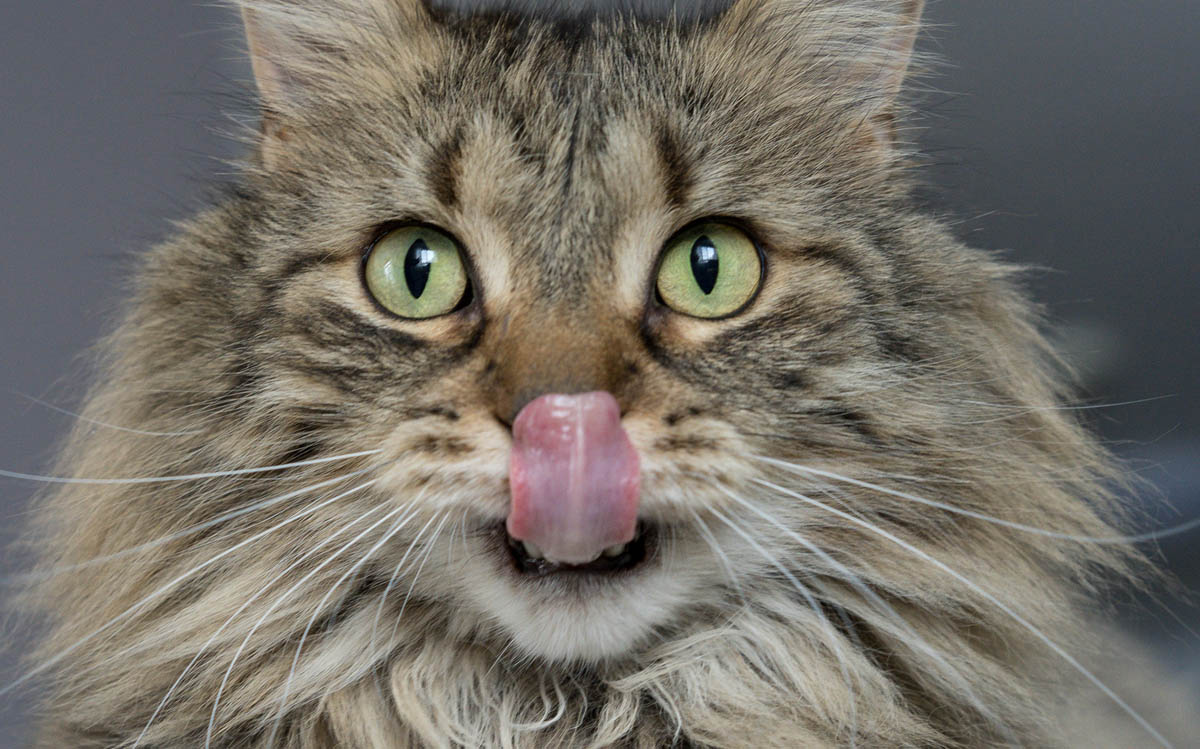What is a mouth ulcer?
A mouth ulcer (or mouth sore) is a painful, open sore that can affect the gums and tongue. Erosion of the delicate tissues in the mouth due to injury, infection or cancer causes ulcers to form. They are not a disease in themselves, but rather they are a symptom of an underlying condition.
Causes
- Calicivirus
- Uremic poisoning
- Pemphigus complex
- Stomatitis
- Feline herpes
- Ingestion of toxins
- Thermal or electrical burn
- Systemic lupus erythematosus (SLE)
- Rodent ulcer
- Oral cancer
Symptoms

Mouth ulcers are small, painful, round, white lesions affecting the mouth including the lips, tongue, and gums.
Calicivirus
Calicivirus is a common viral infection in cats that causes cat flu, producing upper respiratory symptoms such as sneezing, nasal discharge, rhinitis and mouth ulcers. Cats become infected either directly, via direct contact with the secretions of an infected cat, or indirectly via fomites (inanimate objects such as food bowls and bedding).
Treatment:
Supportive care while your cat mounts an immune response. This may include antibiotics to treat secondary bacterial infection and fluids to prevent dehydration. Removal of nasal and eye discharge with a warm, damp cloth.
Feline herpes
Feline herpes is a common viral infection that causes upper respiratory symptoms and oral ulceration in affected cats. Kittens and senior cats are at greater risk than healthy adults.
Treatment:
Supportive care such as keeping the eyes and nose clear of discharge, fluids to treat dehydration, nutritional support, antiviral medications and in some cases, antibiotics to treat a secondary bacterial infection.
Uremic poisoning
Uremic poisoning occurs when nitrogenous wastes build up in the blood due to the kidneys not functioning properly. There are a number of reasons this may happen such as urinary blockage, drugs, and toxins, shock, bladder rupture, but most often the kidneys become less efficient as the cat ages (chronic kidney failure).
Treatment:
The goal of treatment is to find and address the underlying cause. Dietary management of chronic kidney disease along with phosphorous binders and supportive care.
Pemphigus complex
A group of rare, autoimmune skin diseases affecting many parts of the body, including the oral cavity. Middle-aged cats are most at risk. There are three forms of the disease, each affecting different layers of the skin. The rarest form, pemphigus vulgaris results in the formation of ulcers in the mouth.
Treatment:
Immunosuppressive drugs or steroids in milder cases, and antibiotics to treat a secondary infection.
Stomatitis
Stomatitis is an inflammation of the mucous membrane in the mouth, the exact cause isn’t known, but it is thought to be immune-mediated, possibly due to oral bacteria. Other possible causes may include infection, certain medications, and metabolic disease.
Treatment:
Treatment of stomatitis is difficult, find the underlying cause if possible, clean the teeth, antibiotics and corticosteroids to reduce inflammation.
Ingestions of toxins
Some poisons and plants can result in mouth ulcers in cats due to inflammation. Certain plants and acid or alkaline corrosive chemicals (detergents, battery acid, anti-rust compounds, bleach/chlorine, drain cleaners, dishwashing detergent, radiator cleaning agents and swimming pool algicides) can cause irritation and ulceration.
Treatment:
Inducing vomiting is contraindicated in cats who have ingested corrosives as it can cause additional damage to the esophagus and mouth. Dilution with water or milk, neutralise with weak alkali or weak acid where possible, and supportive care which may include antibiotics, painkillers, and anti-inflammatories.
Thermal or electrical burns
These are less common to occur in cats than dogs. Thermal burns occur in the mouth when your cat eats something hot and electrical burns occur when your cat chews through an electrical cord, this type of injury occurs most in younger cats.
Treatment:
Manage any underlying issues, such as fluid in the lungs, which commonly occurs, cleaning any wounds and antibiotics prescribed.
Rodent ulcer
An inflammatory disorder characterised by the infiltration of eosinophil cells to the affected area. Most rodent ulcers occur on the lip, but the inside of the mouth can also be affected. It is thought to be caused by an allergic reaction, such as flea bite sensitivity or food allergies.
Treatment:
Find and address the underlying cause which may include as diligent flea control or a change in diet. Steroids can reduce inflammation. If treatment doesn’t work, surgical removal of lesions may be necessary.
Oral cancer
Squamous cell carcinoma is a fast-growing oral cancer characterised by swelling of the face and oral cavity, bad breath, bleeding in the mouth, drooling, weight loss and growth in the mouth, along with possible ulceration. This type of cancer is extremely malignant, quickly spreading to other parts of the body. Oral cancers occur most often in older cats.
Treatment:
Can be difficult due to the location, surgery if the cancer is in the lower jaw along with chemotherapy and or radiotherapy as a follow-up, or stand-alone treatment with inoperable cancers.
Diagnosis
Your veterinarian will perform a complete physical examination of your cat and obtain a medical history from you. Questions they may ask include:
- How long your cat has had mouth ulcers?
- Are there other symptoms?
- Has the cat had exposure to plants, chemicals or toxins recently?
- Is the cat up to date on his or her vaccinations?
- Does the cat have any pre-existing medical conditions?
Accompanying symptoms may also give your veterinarian an indication of the cause, for example, if the cat has runny eyes and nose, he will suspect herpes or calicivirus, he will inspect the ulcers, the location, size and make a guarded assessment.
Diagnostic workup:
- Biochemical profile, complete blood count, and urinalysis to evaluate organ function and determine the overall health of the cat.
- CT scan and biopsy to diagnose cancer.
- Biopsy and cytology of affected tissues in cats with rodent ulcer, SLE or pemphigus.

